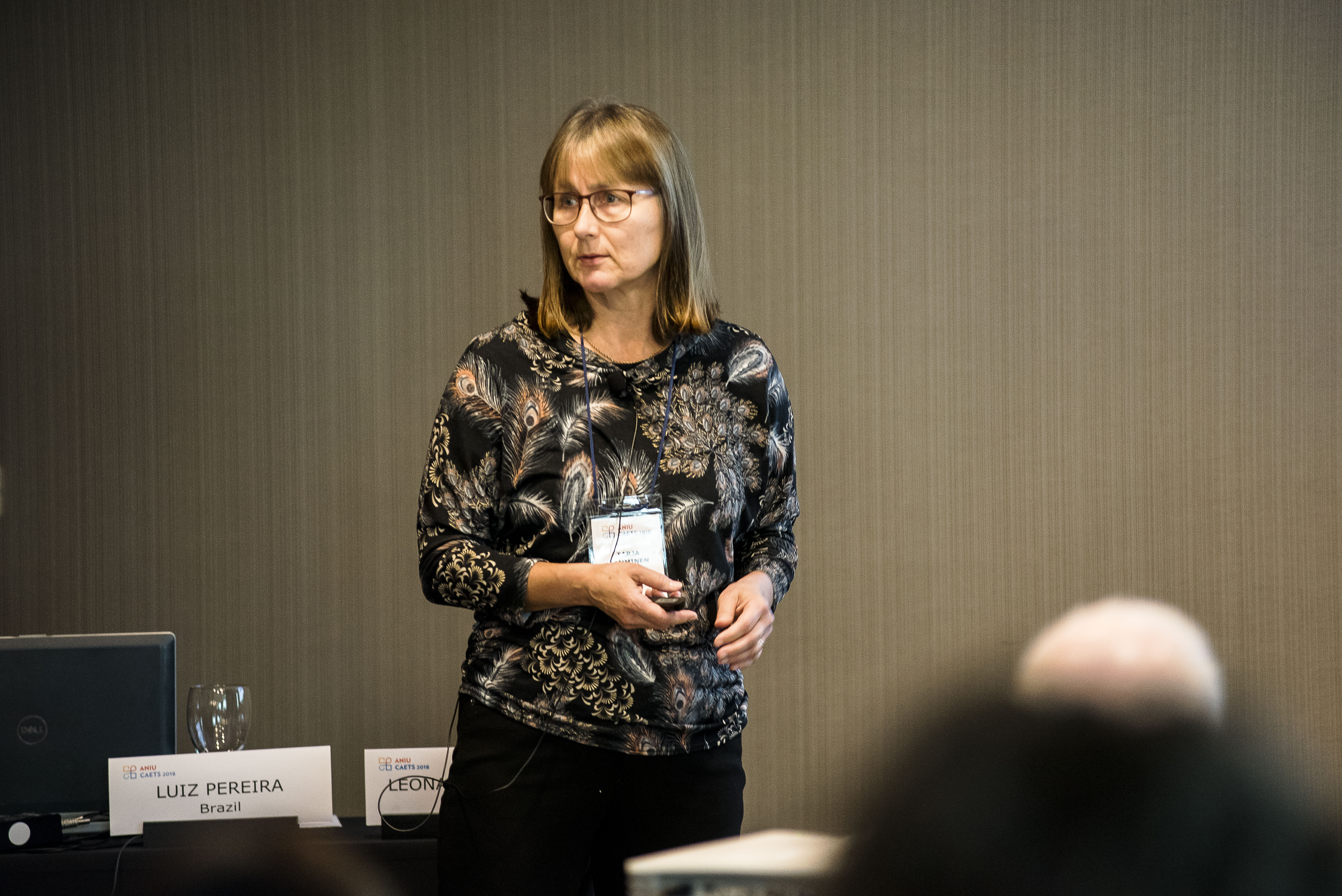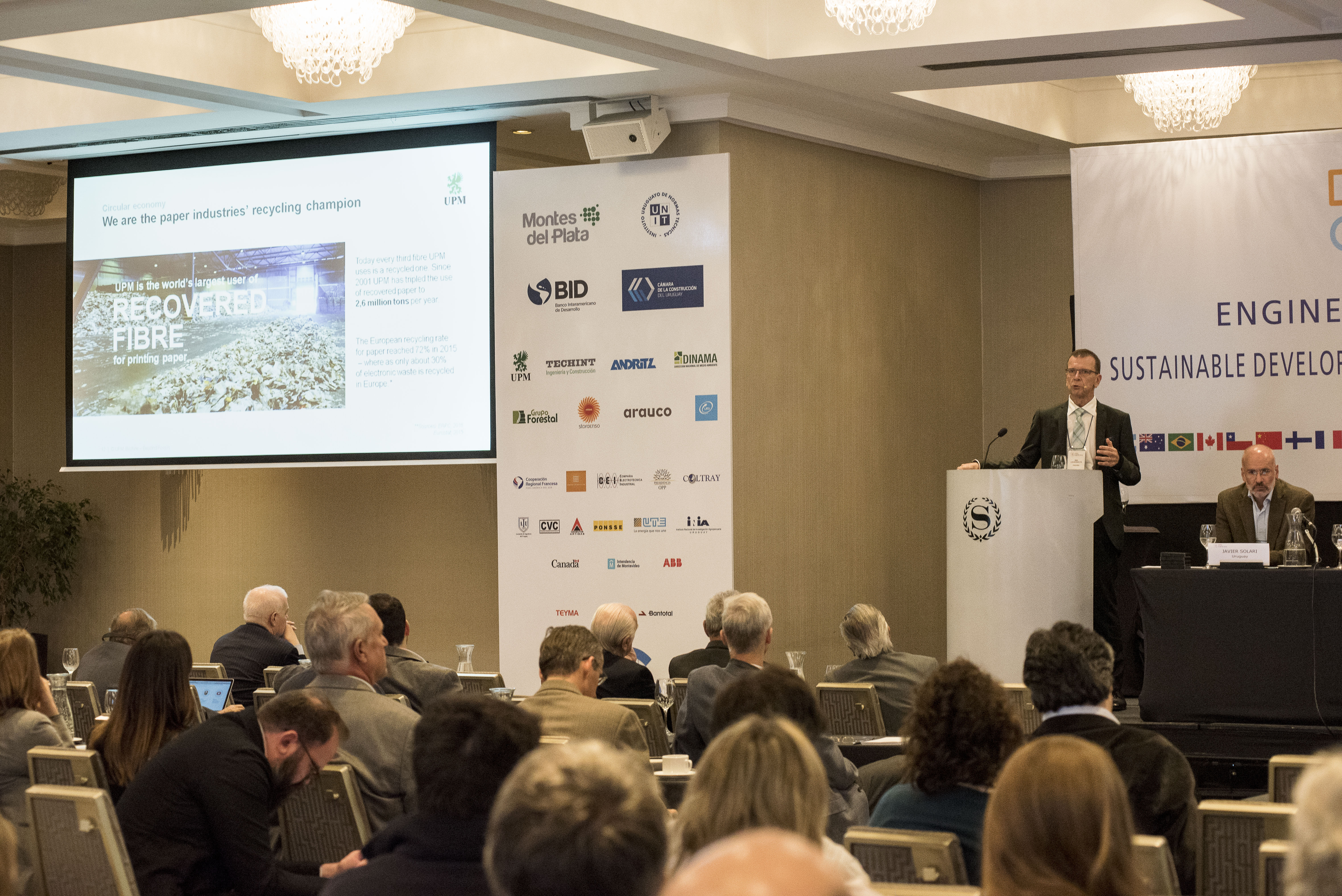During the event, organised by the International Council of Academies of Engineering and Technological Sciences (CAETS) together with the National Academy of Engineering of Uruguay, one of the key messages was that wood-based chemicals, fuels and new bio-materials are the smallest but fastest growing sector of the wood-based industry.
Indeed, biomass is an increasingly important part of the industry’s development of a circular economy, in which waste is minimised by every part of an industrial process by being reutilised for something.
Lignin shows great potential
“Everything that’s made from fossil fuels today can be made from a tree tomorrow” was a mantra repeated several times during the conference. Lignin is one of these wood-processing by-products that numerous attendees from various parts of the industry believe has great potential for replacing plastic and fossil fuel-based products.
"It will be possible to make money out of lignin," said Tarja Tamminen, a principal scientist at the VTT Technical Research Institute of Finland. "It's not happening right now, but I feel we are rather close to that time."
She said that the best commercial opportunities for lignin may be in replacing fossil-based phenol in resins used in products such as plywood and some furniture. Considering plywood is a multi-billion dollar industry and eco-friendly wooden furniture is one of the fastest growing trends in that market, lignin can become a lucrative product for Latin American pulp mills.

Tarja Tamminen
Tamminen also pointed out that the different types of lignin could also replace polyurethanes, thermoplastic composites, surface active agents, carbonised materials, fuels and other chemicals.
“Lignin can provide cost savings with additional functionality,” she said. Some lignins have proven to be fire retardant, capable of blocking UV rays and have anti-oxidative
properties, each of which is useful in various different applications from composites to concrete.
Concrete production is another steadily growing industry throughout Latin America, especially in Brazil, which presents another opportunity for Latin American pulp mills to increase their revenue streams.
Aiming for an earth-to-earth circle
The wide utility of lignin as well as other pulp mill by-products and residues is helping the industry achieve a circular economy. Esa Laurinsilta, Director of Strategic Partnerships at UPM, told the conference that sustainability is a strong basis upon which future growth in the sector must be built.
"We have to base our operations both on sustainable sourcing of biomass and sustainable development programmes,” he said. “This is essential so that we can respond to the megatrends of urbanisation and climate change as well as the increasing demand for sustainability from consumers."
Laurinsilta said that reusing materials and emphasising eco-design principles are the cornerstones of a circular economy. This includes reusing and recycling materials; creating new products from residues and side streams; investing in processes that aim to close loops for materials and resources, such as loop water circulation; and, in general, thinking of waste as a resource.

Esa Laurinsilta presenting
Among its current initiatives, UPM recycles 2.6 million tonnes of recovered fibre each year for use as printing paper and fertilises some of its forests with the ash generated from burning biomass. Quite literally, as Laurinsilta was quick to point out, completing the earth-to-earth circle.
"Our next step is going to molecular based value-added products, meaning that we actually have products derived from cellulose, hemicellulose and lignin,” he said. UPM’s current development focus areas are within biofuels and bio-based chemicals.
Finally, he emphasised that achieving a circular economy is not something that can be done alone.
"Innovation is really a key point for UPM and any company developing new kinds of solutions. And one thing we have to emphasise is that innovation doesn't happen alone,” he said. “Cooperation and collaboration is now needed more than ever. Research consortia should include partners from private companies, research organizations and public authorities,” says Laurinsilta.
Text: Daniel Dawson

